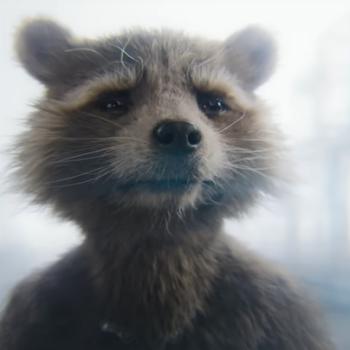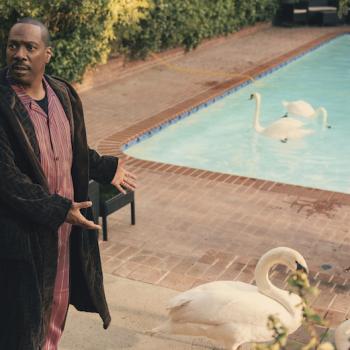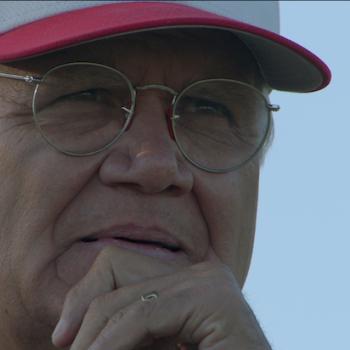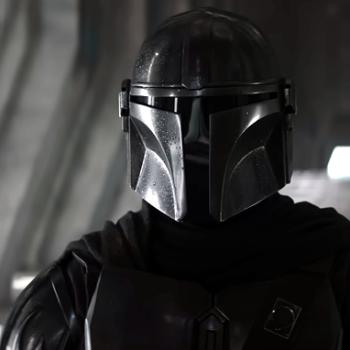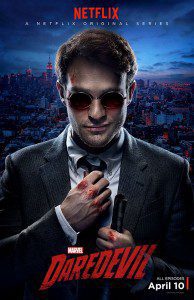 Binge watching is the bane of a harried entertainment critic.
Binge watching is the bane of a harried entertainment critic.
Some of you have watched all 13 episodes of Marvel’s Daredevil by now. I’ve yet to crack open the second ep. The upside: No spoilers today. The downside: I can’t offer a comprehensive take on Netflix’ ambitious new series. I can only offer a smattering of first thoughts and impressions. But for what they’re worth, here they are.
This ain’t your Avengers superhero story. Daredevil is bloody. Really bloody. I said so in my Plugged In review, and from what I understand, there’s much more blood to come. Daredevil wasn’t given its TV-MA rating on a whim.
But you can look at that blood on two different levels. Sure, it’s not nearly as clean and (relatively) family friendly as Marvel’s bright, colorful, high-energy movies. This ain’t for kids. But I think that’s the point. Daredevilhas always been grittier than high-flying Iron Man or Thor. This is a dark world Daredevil inhabits—more Christopher Nolan (The Dark Knight) than Joss Whedon (The Avengers). It more closely resembles the world you and I live in. And that means …
There are consequences. Let me reveal my inner fanboy for a moment and say this: The Avengers is a pretty great movie—a template for how a good action flick should look and sound and feel. The destruction of New York was—let’s just say it—quite the spectacle.
But in the midst of that spectacle, it’s easy to lose track of the horror that would’ve been felt by the everyday city-dweller. In that movie, and in so many others, whole cities are laid waste before the credits roll, apparently, forgotten about. It’s almost like these cities were built to be destroyed (and, strictly speaking, I suppose these CGI cities were). But in real life, precious things would’ve been lost in the rubble. Even if we were deliriously optimistic and not a single innocent life was lost in those titanic struggles, it’s no easy task to rebuild from disaster. Anyone who’s been through one can tell you that.
Daredevil hints at the catastrophic cost of living in Marvel’s high-flying world. The series takes place after the events of The Avengers. The Hell’s Kitchen neighborhood of New York City, where Matt Murdock was born and raised, is being rebuilt, brick by painstaking and problematic brick. Loki’s mischief wasn’t just here and gone in Hell’s Kitchen, like a loud bad dream. It happened. And everyone in Daredevil is still picking up the pieces.
Even when we do good—and do what we must—there are sometimes casualties. There are consequences.
Daredevil himself is an example of that. In the Marvel movies, our heroes are nigh indestructible. They thud into trees and cliffs and buildings like LEGO pieces—a little scuffed, maybe, but no worse for wear. Even purely mortal heroes, like Sam Wilson/Falcon in Captain America: The Winter Soldier, bounce off flight decks like it’s no big thing. If you or I or even J.J. Watt suffered the same sort of calamities Falcon does, we’d all be in traction, sipping our lunches through straws.
This isn’t a critique of these movies. Realism isn’t high on their agenda. But in Daredevil, you have a “superhero” who doesn’t get thrown across a football field and simply dust himself off. This guy bleeds. He hurts. Just as New York City suffered through the events of The Avengers, so Daredevil suffers for his own fight against evil. And like the city—like, Murdock says, his father—he gets back up. He follows his calling, but there are consequences.
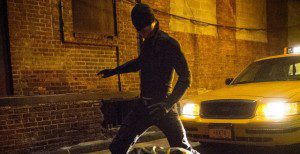 And that makes him, in a way, more heroic. Again, not to demean our beloved Avengers, but really, those folks were pretty much built to do what they do. It’s like when you’re 6-foot-10, someone’s going to stick you on the basketball team. When you turn big and green and indestructible when you get angry, someone’s going to want you on their superhero squad.
And that makes him, in a way, more heroic. Again, not to demean our beloved Avengers, but really, those folks were pretty much built to do what they do. It’s like when you’re 6-foot-10, someone’s going to stick you on the basketball team. When you turn big and green and indestructible when you get angry, someone’s going to want you on their superhero squad.
Matt Murdock isn’t built to be a superhero. He is a self-made do-gooder who risks his life night after night despite the dangers—turning a disability into his one remarkable asset. He’s a little like Batman—but without the superhuman bank account and he actually is as blind as a bat.
And again like Batman, he’s deeply flawed. Not only is he not super, but there are times, I suspect, when he won’t be all that heroic. My favorite part of “Into the Ring” was Murdock’s opening “confession.” He quotes his grandmother: “Be careful of the Murdock boys. They’ve got the devil in them.” That’s an interesting theme for me, the hero letting out the devil inside. Challenging. I’ll be curious to see where that goes, particularly as it rubs against Murdock’s Catholic faith.
Daredevil has its problems, of course. But in terms of the narrative, it’s gotten off to a promising start. We’ll see how it looks like at the end.




